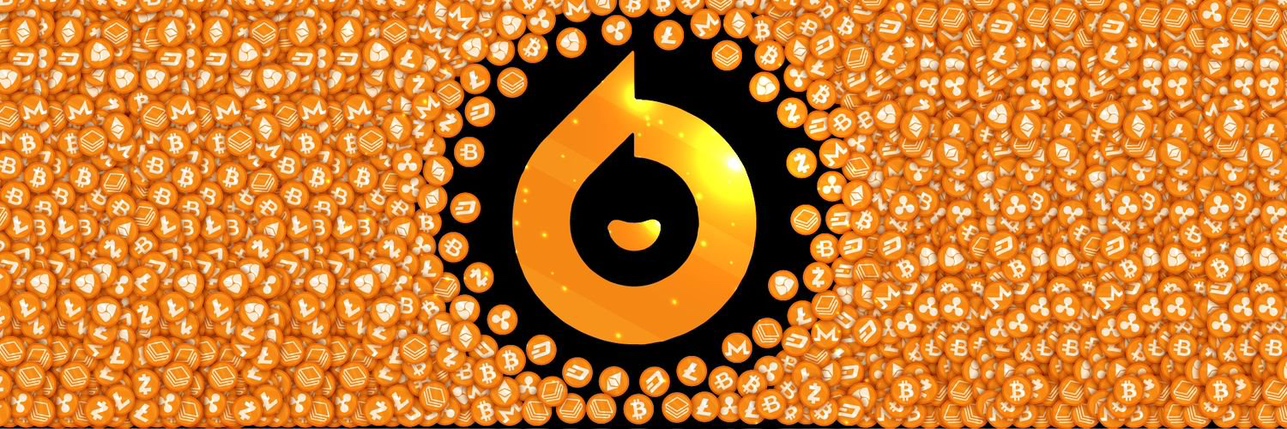
TROY 價格TROY
TROY/TWD 匯率換算器
TROY 市場資訊
今日TROY即時價格TWD
加密貨幣市場在2025年12月15日,正處於一個充滿變化的環境中,受著重要的監管進展、日益演變的宏觀經濟因素以及關鍵項目發展的影響。在主要加密貨幣經歷價格整合的同時,基礎設施仍在不斷成熟,為投資者帶來了挑戰與機遇。
監管明朗化在價格波動中顯現
2025年底最具代表性的主題之一是全球範疇內監管明朗化的速度加快。美國尤其活躍,兩黨合作推動全面框架的制定。今年11月,美國參議院農業、營養和林業委員會發布了一份討論草案,旨在授予商品期貨交易委員會(CFTC)對數位商品的新權限,此舉是繼眾議院在7月通過的《CLARITY法案》之後的進一步行動。這一立法推進得到了證券交易委員會(SEC)和CFTC之間的增強協調的支持,並伴隨著來自SEC和國稅局(IRS)的有關代幣分類和保管的新指導。
在監管環境日益穩固的背景下,紐約州州長凱西·霍喬爾於12月5日簽署了對《統一商業法典》(UCC)的修正案,納入了第12條,以釐清數位資產的財產、轉讓和優先權規則。12月12日,貨幣監理署(OCC)對五家數位資產公司,包括知名的Circle和Ripple,授予有條件的批准,以獲得全國信託銀行特許,標誌著向傳統金融的整合邁出了重要的一步。當天,SEC還發布了一份投資者公告,建議零售投資者採取安全的加密資產保管措施,並為存管信託公司(DTCC)提供了一份不採取行動函,以便試點傳統證券的代幣化。
在大西洋彼岸,歐盟《加密資產市場法規》(MiCA)仍在不斷實施中,白皮書格式的要求,包括iXBRL格式,將於2025年12月23日生效。南韓也在加強監督,金融服務委員會於12月8日提出規則,要求對加密交易平台的安全事件承擔無過失責任,並要求責任保險或準備金。
儘管在監管方面取得了進展,整體市場仍經歷了一些波動。比特幣目前交易價格約為90,000美元,最近價格下滑至88,082美元。這一波動部分歸因於宏觀經濟擔憂,特別是對日本央行(BOJ)預計在12月18日至19日之間可能加息的擔憂,這可能會觸發資本回流並減少全球流動性。與此同時,美國聯邦儲備系統在12月初進行了2025年的第三次25個基點的降息,將利率降至3.50%-3.75%,這一情況已在市場中反映,導致比特幣的市場反應較為平淡。
關鍵市場推動者和項目啟動
今天標誌著受監管衍生品交易的一個重要日子,Cboe Global Markets推出了比特幣和以太坊的連續期貨合約(PBT和PET)。這些新工具旨在在受監管的美國框架中提供對領先數字資產的長期敞口,而不需滾動合約。這一發展預計將吸引更多機構參與並增強市場流動性。
目前,山寨幣市場正面臨一系列代幣解鎖事件的壓力。Bitget新聞指出,許多山寨幣,包括Boundless (ZKC)、WalletConnect Token (WCT)、Aster (ASTER)和StarkNet (STRK),今天(12月15日)正在進行重大的代幣解鎖。此類事件通常會增加流通供應,如果未能滿足足夠需求,可能會對價格施加下行壓力。
在去中心化金融(DeFi)領域,ZIGChain今天下午2點UTC舉行了一場關鍵的主網收益直播活動。這一活動將展示ZIGChain主網上各個協議是如何通過各種整合產生真實用戶收益的,包括通過Oroswap進行的AI驅動交易、Valdora (stZIG)的流動質押、Nawa Finance的倫理DeFi收益、PermaPod的現實世界資產(RWA)貸款以及Zignaly的結構化指數產品。這突顯了去中心化金融領域的持續創新,特別是在現實世界資產的代幣化和收益生成方面。
DeFi和NFT市場
去中心化金融(DeFi)繼續沿著其演變的軌跡發展,顯示出增強跨鏈互操作性、流動質押協議增長以及去中心化交易所(DExs)和自動化市場製造商(AMMs)的創新等重要趨勢。Solana的DeFi貸款領域表現出顯著的韌性和增長,截止2025年12月,其總鎖倉價值(TVL)達到36億美元,較去年的增長率為33%。這一增長在很大程度上歸因於Solana的高效基礎設施,提供低交易成本和高交易最終確定性,吸引了零售和機構流動性。
相對之下,非同質化代幣(NFT)市場正經歷著重大下滑。2025年11月,全球NFT銷售暴跌至3.2億美元,幾乎是10月數據的一半,而12月初的每周銷售量創下全年最低,僅為6200萬美元。整體NFT市場的市值從1月的92億美元縮減至31億美元,下降幅度達66%。儘管整體下滑,以太坊基礎的NFT仍在銷售上領先,但Solana的銷售卻顯示出驚人的44%的增長,顯示使用者的活躍度正在向更具成本效益的區塊鏈替代方案轉變。
Bitget交易所發展
Bitget這家知名的全球交易所,正持續在不斷演變的加密市場中進行創新。在2025年12月5日,Bitget宣布對其AI驅動的交易助手GetAgent進行重大升級。此項增強推出了一個更加靈活的回答引擎、一種精簡的用戶介面以及為所有用戶擴展的先進AI交易工具的訪問,旨在簡化交易者的分析和執行。此外,Bitget最近報告稱,從10月中旬到11月底的最近財報季,代幣化美國股票期貨的交易量激增了4468%。這凸顯了全球對代幣化股票日益增長的需求以及Bitget在促進這一新興資產類別中的作用。
然而,根據其定期審核過程,Bitget也實施了一些退市。在12月12日時,15種現貨交易對被移除,另外12種交易對計劃於2025年12月19日退市。
總之,2025年12月15日,讓加密市場在加速推進監管框架、敏感的宏觀經濟環境、DeFi持續創新、NFT市場面臨挑戰以及像Bitget這樣的交易平台發展的關鍵時刻。
您認為今天 TROY 價格會上漲還是下跌?
目前您已了解 TROY 今日價格,您也可以了解:
如何購買 TROY(TROY)?如何出售 TROY(TROY)?什麼是 TROY(TROY)?如果您購買了 TROY (TROY) ,會發生什麼事?今年、2030 年和 2050 年的 TROY (TROY) 價格預測?哪裡可以下載 TROY (TROY) 的歷史價格數據?今天其他同類型加密貨幣的價格是多少?想要立即獲取加密貨幣?
使用信用卡直接購買加密貨幣。在現貨平台交易多種加密貨幣,以進行套利。TROY價格預測
什麼時候是購買 TROY 的好時機? 我現在應該買入還是賣出 TROY?
TROY 在 2026 的價格是多少?
2026 年,基於 +5% 的預測年增長率,TROY(TROY)價格預計將達到 NT$0.002349。基於此預測,投資並持有 TROY 至 2026 年底的累計投資回報率將達到 +5%。更多詳情,請參考2025 年、2026 年及 2030 - 2050 年 TROY 價格預測。TROY 在 2030 年的價格是多少?
TROY (TROY) 簡介
TROY是一种具有重要历史意义和独特特点的加密货币。作为加密货币行业的一部分,TROY为用户提供了一种去中心化的数字货币交易方式。
TROY的历史渊源可以追溯到加密货币的早期发展阶段。作为一种开放源码的分布式分类账技术,TROY的目标是提供一种安全、高效和透明的交易方式。其最重要的特点之一是去中心化,也就是没有中心机构或中央银行控制。这种特点使得TROY能够为用户提供更大程度的个人隐私和自由。
TROY是通过区块链技术来实现其核心功能的。区块链是一种去中心化的记录和验证交易的方式,通过将交易数据记录在一个分布式网络中的区块中,实现了可追溯、不可篡改、去信任的交易环境。TROY的交易记录被储存在区块链中,确保了交易的安全性和透明性。
另一个TROY的关键特点是匿名性。与传统银行和支付系统不同,TROY的交易不需要提供用户的个人身份信息,保护了用户的隐私。这种匿名性使得TROY在一些特殊需求的场景中被广泛使用,比如跨境交易和处理敏感信息。
与其他加密货币相比,TROY还具有较低的交易成本和较快的交易速度。由于去除了传统金融机构的中介,TROY的交易费用通常较低。同时,由于基于区块链技术的实时确认和验证,TROY的交易速度通常更快,使得用户能够迅速完成交易。
总之,TROY是一种具有重要历史意义和独特特点的加密货币。其去中心化、匿名性、低成本和快速交易等特点使得TROY在数字货币领域中独树一帜,并且在一些特定场景中得到了广泛应用。通过了解和学习TROY,我们可以更好地了解和认识加密货币行业的发展和进步。
Bitget 觀點



TROY/TWD 匯率換算器
TROY 資料來源
您可以用 TROY (TROY) 之類的加密貨幣做什麼?
輕鬆充值,快速提領買入增值,賣出套利進行現貨交易套利進行合約交易,高風險和高回報透過穩定利率賺取被動收益使用 Web3 錢包轉移資產什麼是 TROY,以及 TROY 是如何運作的?
全球TROY價格
購買其他幣種
常見問題
TROY 的目前價格是多少?
TROY 的 24 小時交易量是多少?
TROY 的歷史最高價是多少?
我可以在 Bitget 上購買 TROY 嗎?
我可以透過投資 TROY 獲得穩定的收入嗎?
我在哪裡能以最低的費用購買 TROY?
相關加密貨幣價格
Bitget 平台新上架幣種的價格
熱門活動
在哪裡可以購買加密貨幣?
影片部分 - 快速認證、快速交易









